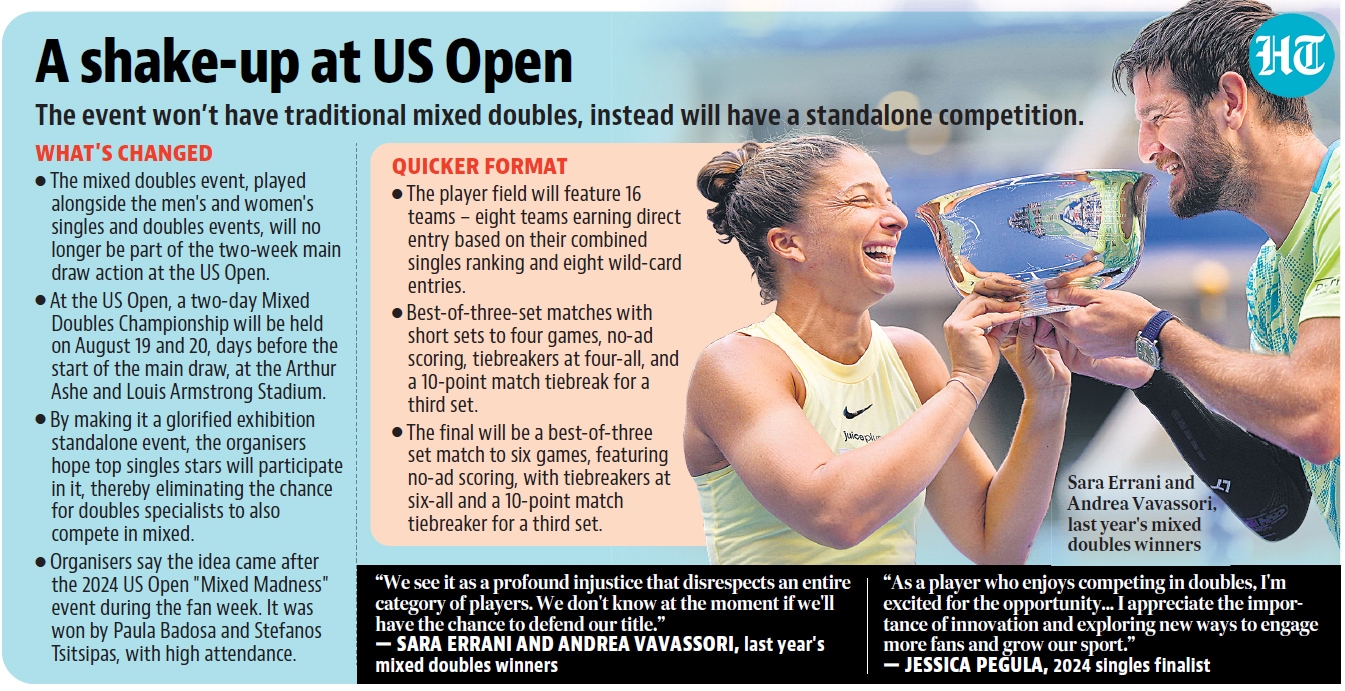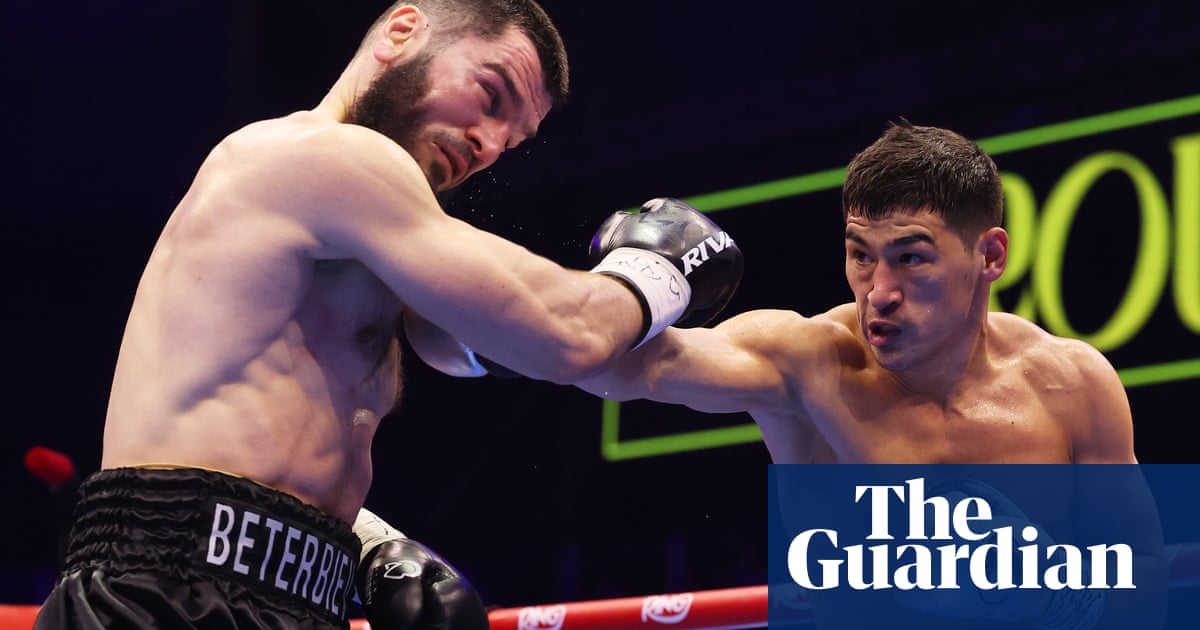Mumbai : For a few years, tennis has looked at ways to make doubles more popular. On Tuesday, the United States Tennis Association (USTA) put out a statement announcing a major revamp of the mixed doubles event at this season’s US Open.

The changes aim to arrest dwindling attendance numbers for doubles matches. However, they have created a stir among the doubles specialists.
“In our opinion making decisions just following the logic of profit is profoundly wrong in some situations,” last year’s US Open mixed doubles champions Sara Errani and Andrea Vavassori said in a joint statement.
“(The) US Open mixed doubles tournament will be completely turned upside down, cancelled and replaced with a pseudo-exhibition focused only on entertainment and show.”
Traditionally, the mixed doubles event in all four Grand Slams are played through the two-week period of that Major. But at this year’s US Open, mixed doubles will be a two-day event on August 19 and 20, with the main draw singles matches started on August 24.
The format has also been revamped with sets finishing with a team reaching four games instead of six and tie-breaks being played at 4-4 in each of the first two sets. A 10-point match tiebreak is played if a third set is required.
The draw will be reduced to 16 pairs rather than 32. Eight teams will be given an entry through singles rankings while the rest will rely on wild cards.

Which means there is a stern focus on singles players being allowed to participate at the tournament rather than the regular doubles specialists.
The mixed doubles event has been an integral part of the four Grand Slams and its legacy goes back decades. Martina Navratilova, Billie Jean King, John McEnroe and many more big names from the sport have competed in the event on a regular basis. From an Indian standpoint, off the 33 Grand Slams won by Leander Paes, Mahesh Bhupathi, Sania Mirza and Rohan Bopanna, 20 were in the mixed doubles event.
But the changes brought by the USTA were not the first time in recent years that tennis bodies have looked to make alterations.
Organisers had noted with alarm that the men’s and women’s doubles finals at the 2024 Australian Open pulled in a fraction of the number of spectators compared to those that watched the two singles finals that year.
“I think we may have lost our way a little bit, (doubles is) not meaning enough,” Australian Open tournament director Craig Tiley was quoted as saying by The Guardian. “We’ve got to get things right, and we can’t keep spinning our wheels on things, and make some decisions.”
The Association of Tennis Players (ATP), which governs the men’s tour, had already launched a review process at the time to look for ways to make doubles more attractive for spectators. In 2006, the ATP had already made an attempt to reduce the length of doubles matches by removing the advantage rule – a golden point would be played at 40-40 in each game.
By April last year though, ATP announced that it will be experimenting with more changes to the doubles format, starting from the Madrid Masters – an important tournament in the men’s calendar.
More slots were reserved for singles players, once again making it difficult for doubles specialists to gain entry into the tournament. The shot clock – time allowed between each point – was reduced to 15 seconds from 25 seconds if a rally lasted three shots or less.
Additionally, for a sport that requires a no-movement and no-sound etiquette from the crowd, fans along the sidelines (except those behind the baselines) were allowed to move without restriction.
The reviews were taken at the behest of Matthew Ebden, a former world No.1 doubles player who partnered Bopanna to the men’s doubles title in Melbourne last year.
According to The Guardian, Ebden claimed that the ATP has “a little big ignored” doubles and that the review was required to “figure out really the purpose of doubles – where it fits, why it exists why it’s valued, if it’s not, why not.”
Tennis Australia, organisers of the Australian Open, have made it clear that they will not follow in the footsteps of the USTA with regards to the revamped mixed doubles event.









